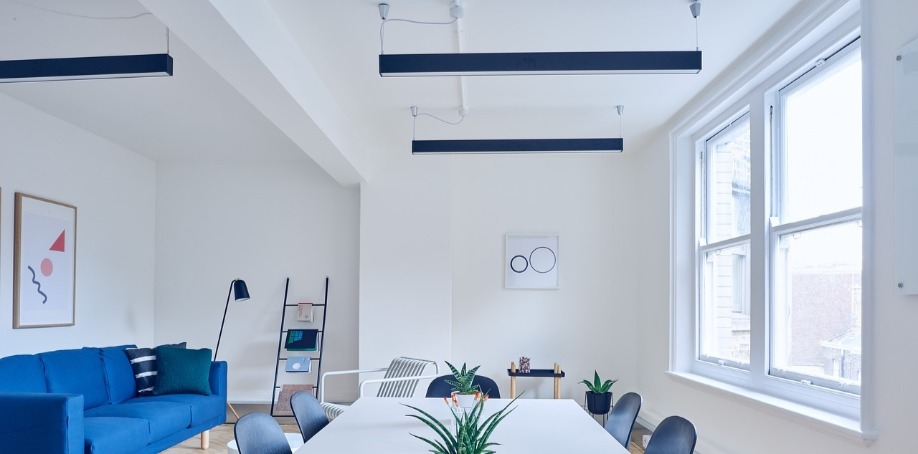
From remote employee meetings to major client calls, professional AV equipment in conference rooms is more important than ever. Having the right equipment for the job spells the difference between a productive workday and hours spent fiddling with unfit equipment.
Still, many conference rooms fail to check all the boxes when it comes to proper AV implementation. Here are the five most common implementation mistakes that cause trouble in a tech-heavy meeting room.
1. Failing to Streamline IT and AV at the Start
One of the most exciting parts of AV over IP switch systems is that they can transmit audiovisual data over an Ethernet connection using standard network equipment. This is an exciting convergence of AV and IT, explains Andy Hammer at HB Communications.
However, not every AV integrator or IT department is ready to buy into this. In fact, some people worry that IT and AV professionals might have a hard time communicating, Information Age's Nick Ismail says. But since AV over IP implementation in conference rooms needs to be strategically planned for, communication is key.
Luckily, networked AV is made for this sort of convergence. “AV over IP promises to take full advantage of the convergence of AV and IT, with the ability to distribute video, audio and control signals over traditional network infrastructure,” Campus Technology's Mike Tomei notes.
Implementing an AV over IP system can help remove some of the pain points in AV and IT convergence, as it works on a system that your IT department is familiar with. This means that both AV integrators and existing IT teams will be speaking the same language.
2. Forgetting About Future Needs
Dependability is the first and perhaps most important thing that businesses need to consider in a networked AV solution. Your network, your equipment and the integrator should be reliable during every stage of implementation, technical marketer S. Kyle Davis states.
This is something that many people overlook, but it isn't enough for conference room equipment to work in the present day. It has to work for tomorrow, too. This is why so many companies and integrators are turning to AV over IP.
The latest AV over IP technology already has a leg up on outdated AV systems. Since new AV over IP tools connect with the network, they're easy to update so that they stay streamlined with the latest technology. It's also easier to learn and understand, helping businesses create a more streamlined onboarding process for new employees.
While this advice is general and can be applied to any system, audiovisual designer and integrator McCann Solutionsnotes that there are certain things that conference rooms in particular need to have in order to be successful.
"The ultimate goal for video conferencing solutions is to maximize productivity by breaking down creative, geographic, and functional silos.”
Equipment that becomes hard to use is a hindrance to growth. Instead, choosing an AV over IP system that adapts to present and future needs can ensure video conferences that boost creativity and productivity fot everyone involved.

3. Choosing AV Systems That Aren't Flexible
Flexibility is something that many AV integrators overlook, and many traditional AV systems don't provide it. But that doesn't mean it isn't important.
"It's no secret that the future of AV signal distribution is a networked-based infrastructure. The closed, fixed-port systems of today will move aside to make room for the highly flexible, highly scalable, and lower cost options of AV over IP distribution systems,” says Todd Akins of WyreStorm Technologies.
Traditional systems are built into a specific area with a specific use in mind. They have less capability to grow with the company because they usually have a set number of inputs and outputs they can work with, each with their own cable.
By contrast, companies like Black Box considers flexibility to be a defining feature of AV over IP. Because it relies on the network instead of cables, it is easier to move around, and can work with as many inputs as the network allows.
This is important because conference rooms need flexibility to meet the needs of a wide range of presentations, seminars and client meetings. If a conference needs to span multiple rooms, for example, or if multiple meetings need to happen at the same time, conference rooms must adapt to these needs quickly. This is one of the most appealing factors of AV over IP.
AV over IP connects easily to legacy equipment and can even replace it with newer equipment that's easier to manage and modify. “It makes new applications of AV possible, such as transmission, switching, and management of AV to disparate devices, including wireless products such as phones, tablets, and smart devices,” Matrox Graphic's Samuel Recine says.
AV over IP works well with existing equipment, saving clients money while leveraging both new and exciting applications. In other words, it is flexible enough to meet the needs of any conference room.
4. Misunderstanding Security Needs
Security is a major concern for most companies. Businesses want to make sure that their network stays secure, and that all employee and client information is kept confidential.
Since AV over IP happens over the network, some people worry that this makes their information easier to hack. But several experts agree that this is not the case, especially now.
“A common misconception about migrating from hardwired AV to AV over IP is that the latter introduces more security risks than traditional AV. With more flexibility and new deployment options, education is the best ally to AV administrators, AV graphics provider Matrox says. Encryption technologies support multiple security needs across AV-over-IP products, keeping networks, businesses and their information secure.
So, what should you be looking for in terms of security?
For one, network designers must segregate AV over IP traffic from other network traffic. They must also create protocols to safeguard digital content and prevent abuse, says AV distribution solutions provider ZeeVee. Keeping the network isolated and secured can ensure that IP-based AV systems avoid any potential legal and financial risks.
Fortunately, more AV security measures are being developed every day. “As AV/IT convergence continues and more facilities specify AV-over-IP designs, and as the industry moves further away from point-to-point systems, security planning for AV content and devices will continue to evolve,” AV Technology's Margot Douaihy writes.

5. Choosing Complicated, Inconsistent Equipment
Security is one of the most important elements of AV integration, and something that integrators struggle with.
"We know that the market needs simple solutions,” says Karmer Marketing Director David Margolin. Complicated or complex systems are rarely better than simple, straightforward ones. It also means that the actual end-user will have a harder time using the system. In this case, it means that employees may struggle to use the AV tools correctly when they need it most.
The problems and frustrations caused by complicated AV tools means that they're used much less, says Alan Williams of Premiere Communications & Consulting, Inc. He agrees that overly complex tools lead to varying inconsistencies in the end user experience.
This is why Margolin believes that AV over IP will become the new AV standard. “New AV owners are still looking for simple solutions for smaller meeting spaces that don't require a high level of technology but do require remote management.”
The ability to identify an issue with the meeting space can help minimize downtime and create a more reliable user experience overall. Networked AV provides these benefits, and is more simple to use.
According to Daniel Shwartzberg of HDBaseT Alliance, networked AV “allows integrators to replace a multitude of cabling with a single cable.”
This simplicity — and the ease of use — makes AV over IP a favorite of integrators and end-users alike. It also helps prevent the most common mistakes causing inconsistencies and poor user experiences in traditional conference room AV.
Images by: rawpixel, Pexels, Sarah Pflug


